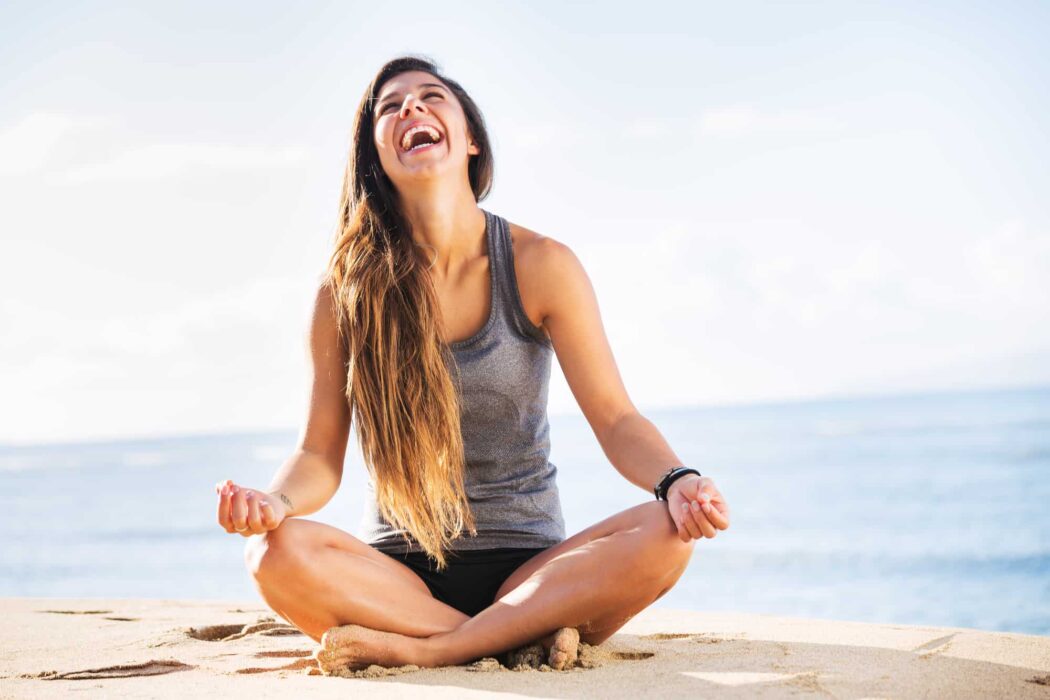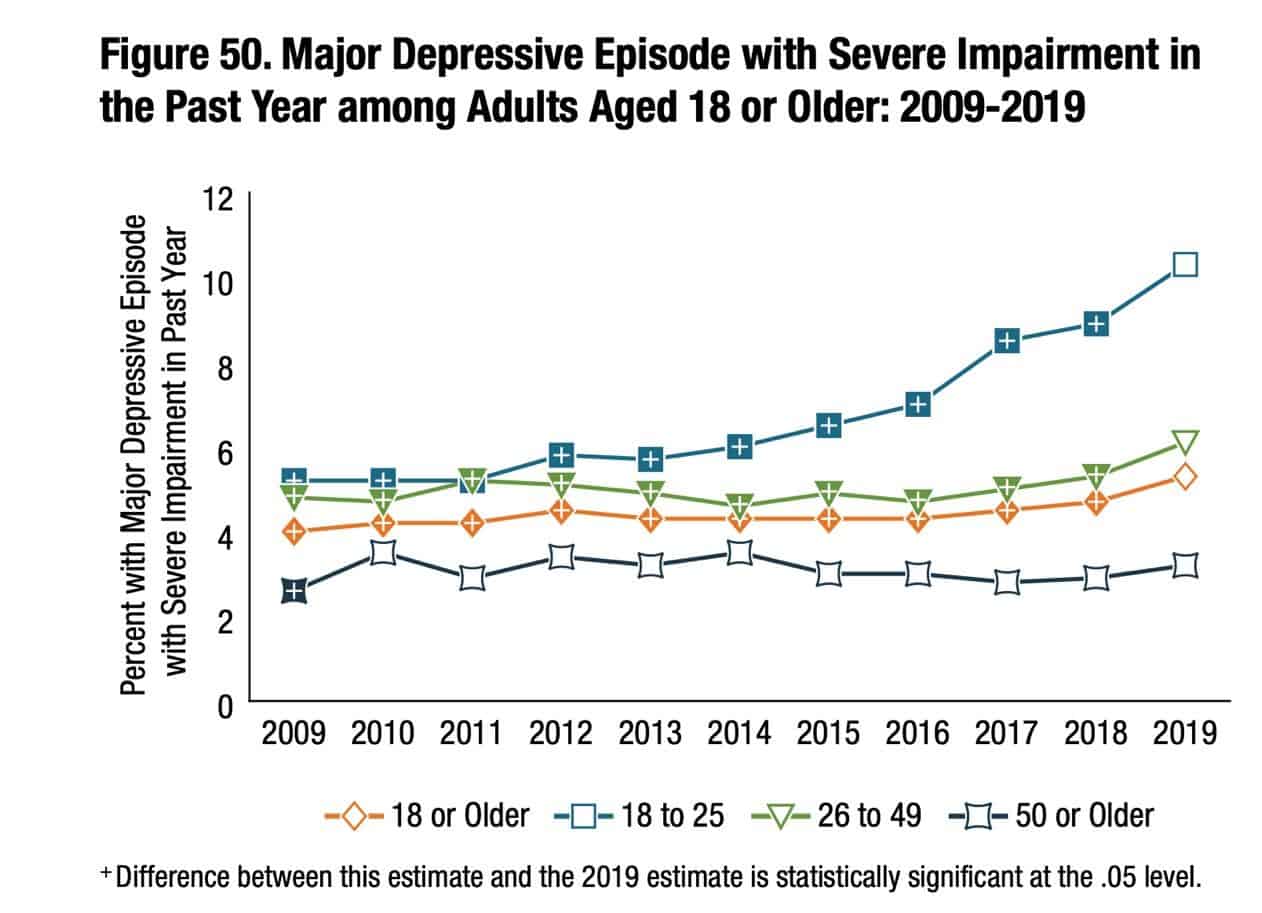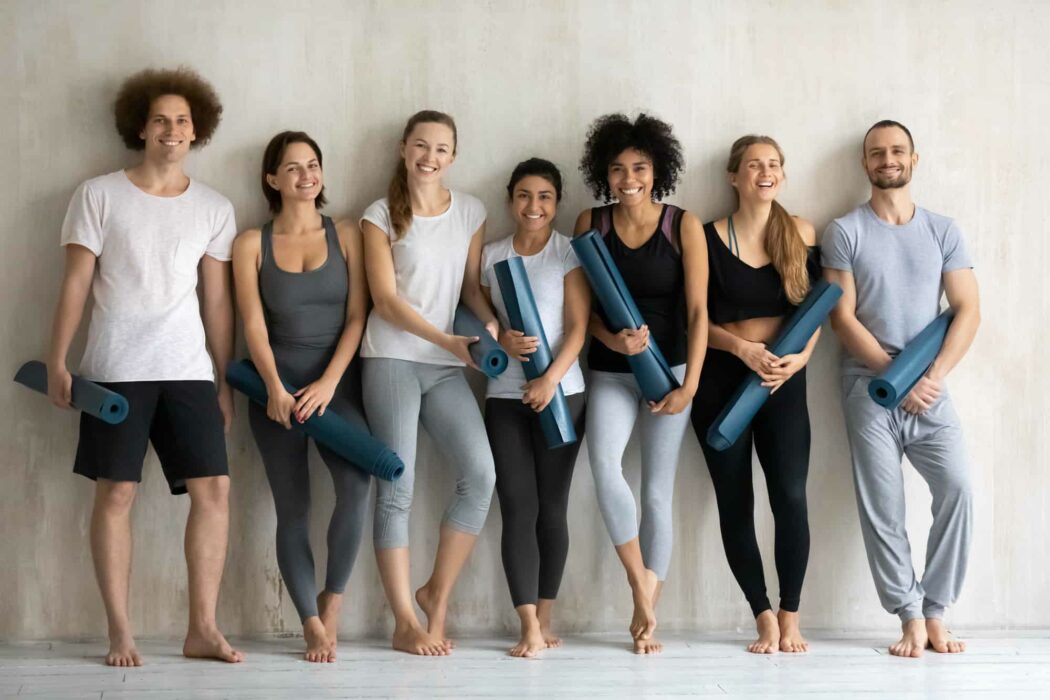Yoga builds strength, flexibility, and a better range of motion, and those are visible effects. Probably, physical benefits are not the main reason people get that positive feeling of resilience and peace practising yoga. But what is the secret then?
The whole practice works toward keeping you present in the moment. When you are present, your mental energy and attention are in one place. You are not thinking anxiously about tomorrow’s meeting with a boss. You can find the connection between your body and mind.
Using all yoga tools – asanas, breathing techniques, and gaze – you can concentrate better, develop the reaction to stressors, regulate your heart rate and blood pressure, and get deeper relaxation. As a result, your mental health becomes more satisfying.
But let’s check what else happens to you during and after a yoga class.
How to Benefit from Yoga for Mental Health
Get Happy Hormones Boost
As you move through your Sun salutation, your heart rate increases, and the muscles start to work harder. That stimulates the release of “good” chemicals such as serotonin, dopamine, and norepinephrine. These mood boosters make you feel happier after you are off the yoga mat.

Slow-paced practice helps release GABA (Gamma-aminobutyric acid) neurotransmitter, which suppresses the neural activity in your brain that can lead to anxiety and negative feelings. As a result, after a yoga class, you become more self-confident, and your emotions are more likely to stay on the bright side.
Withstand Stress Better
When you combine tightening and relaxation of your muscles, you reduce the overall tension on the body and mind. Plus, you get a positive effect from a calming atmosphere and peaceful healing mantra music you can find almost in any yoga studio or class. In this way, your body recovers from stress faster. You get more energy and peace of mind to face the stressors and overcome the difficulties.
Learn to Breathe Out the Anxiety
Did you know there is a relation between anxiety and breath rhythm? When you are anxious, your breathing is shallow and concentrates in the upper lungs lobes. Practicing yoga breathing, for example, Ujjayi, you can activate the lower lobes that in turn activates the parasympathetic nervous system and initiates the relaxation processes in your body. So with yoga breathing, you can regulate the way you breathe and thus lower the anxiety level.
Why Yoga Breathing Is Important?
For diagnosed anxiety disorders, yoga is used as an extra tool along with therapy and pill treatment.
Cope with Depression

According to the dull stats, the level of depression in adults aged 18-64 has increased dramatically in recent years. But yoga helps prevent this percentage from rising.
A reduced level of the stress hormone cortisol is another yoga outcome for mental health. People with lower cortisol levels are less prone to depression and anxiety.
Kriya yoga was reported as a natural, safe and inexpensive antidepressant. In several pieces of research of Indian scientists, yoga practice showed effects similar to those gained from using medications.
Also, according to Amy Novotney at American Psychological Association, yoga is widely used as a complementary tool in the psychotherapy of depression, insomnia, and other mental disorders.
Your Concentration Improves
If you have trouble with focusing on one task, try some basic yoga practice. It’s pretty difficult to be distracted if you are doing any of the balancing poses, like Warrior or Tree pose.
Learning to concentrate on your breath, your senses, or holding your body in the shape of an asana can be helpful when you’re off the mat. Plus, clearing the mental garbage off your mind helps you to be more focused and develops your memory.
Sleep Like a Baby
The study done by the Canadian Center of Mental health and Women’s Hospital at Harvard Medical School proves that Kundalini yoga practice contributes to positive changes in sleep quality.
Another study conducted among people 60 years old found that yoga increases the quality of sleep. It helps to fall asleep faster and prolongs the time spent in bed, giving better sleep efficiency.
Feel Better Connection with Your Needs
Yoga helps bring back your natural sensitivity and proprioception of the body. You become receptive and, thus, attentive about what you eat and how you feel. More likely, you will change your diet to a healthier one. It won’t be a surprise if you can quit smoking or\and lose weight faster with the support of a healthy environment.
Know You’re Not Alone
When you’re in a group of people doing the same thing together, you get this sense of being connected to something bigger than you. This reduces the feeling of isolation and helps to feel safe, supported and maintain more consciousness and social responsibility.

Being bound with a group through the same breathing rhythm and movements creates synchrony and gives you more energy during and after the session.
What Yoga Is Best For Mental Health?
American Psychological Association confirms that Hatha yoga will be the best choice to relieve stress and decrease mental health disorders like anxiety, insomnia, or depression. Hatha involves basic movements and relevant breathing exercises for these goals.
Although, that doesn’t mean that more active yoga styles like Vinyasa, Ashtanga, and Bikram yoga are less effective. We’d suggest giving it a try and decide what works best for you.
How to Get Started?
The best idea for a complete beginner is to get yourself a private session with a qualified instructor. So he or she can cue you into the pose and help use modifications suitable for your fitness level. In this way, you can learn at your own pace and avoid injuries during the practice.
Why Yoga Is Good? 5 Unique Yoga Benefits Proved with Your Anatomy
Still, group class gives its benefits to go for it if your level is closer to a middle one. In the pandemic world, of course, you can use online classes or sessions.
Doing yoga isn’t just a fashion trend or fitness routine. Yoga has been a lifestyle for many people, and its basic techniques have been around for years. Try it, and you’ll see that this an easy, inexpensive but efficient way to become more sparkling and cheerful.